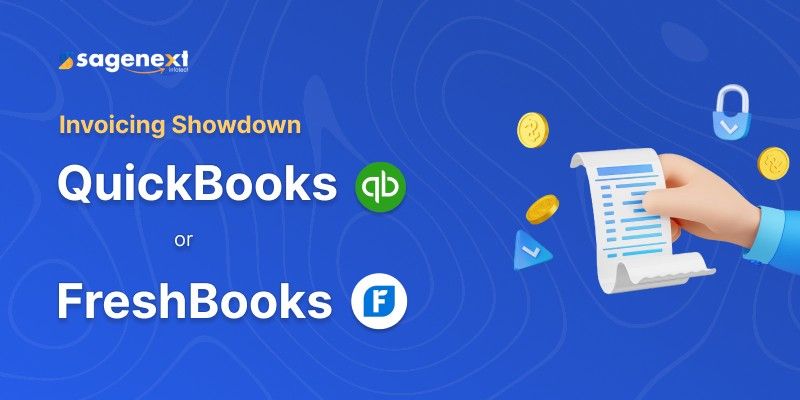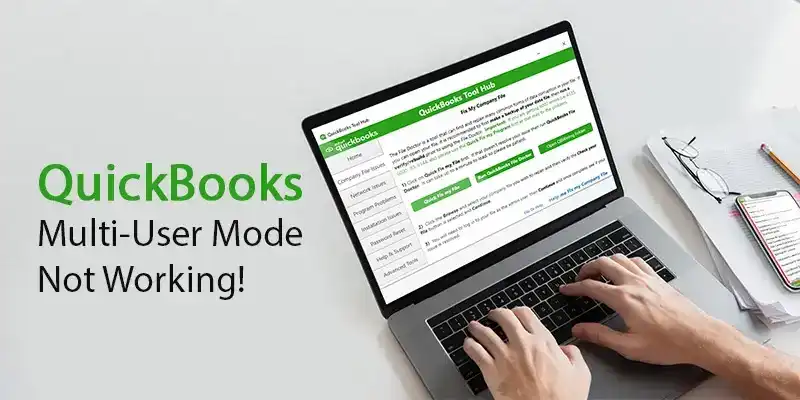
A Short-Guide on Invoicing Services of FreshBooks and QuickBooks
Considering the overall effective management of business finances, invoicing software is a fundamental requirement in order to enhance billing procedures and collection. Freshbooks and QuickBooks are two of the most popular platforms in this sphere, which provide rich invoicing capabilities related to the users’ requirements. FreshBooks is highly acclaimed for being user-friendly, and it is particularly popular among freelancers and small businesses. QuickBooks on the other hand is more professional and encompasses more enhanced tools, which are beneficial for large-scale businesses that require intricate invoicing systems. This document will provide a basis for evaluating FreshBooks and QuickBooks, specifically focusing on invoicing functionalities of both tools to allow businesses to determine which meets their needs for operations.
Comparing the Invoicing Services Provided by FreshBooks and QuickBooks
FreshBooks Invoicing Features
1. Customizable Invoices:
- With FreshBooks, the users can generate professional-looking and personalized invoices by incorporating their own logos, branding colors and template
- Invoices can be customized with user messages and terms to help effectively communicate with the clients
2. Recurring Invoices
- FreshBooks supports recurring invoices, which can be set up to automatically bill clients on a regular schedule
- This feature is most appropriate for activities that require long-term subscription or for projects that are on-going.
3. Automatic Payment & Reminders
- FreshBooks can automatically follow up with a client in case they have not paid their invoice, thus enhancing cash flow management.
- These alerts can be set in different frequencies and contents by the users.
4. Multi-Currency & Multi-Language Support
- The software allows the user to send invoices in multiple currencies and different languages, which can be beneficial for companies working with diverse clients from various nations.
- This feature ensures that invoices are clear and understandable for clients around the world.
5. Online Payments
- FreshBooks also supports multiple payment processors whereby clients can pay the invoices through credit card, ACH, or other options.
- This integration helps in speeding up the payment process and reduces the time spent on collections.
QuickBooks Invoicing Features
1. Customizable Invoices
- QuickBooks offers a feature for customizable invoice template which allows users personalize and customize the layout by including various components like the company logo and format etc.
- It also possesses lines that allow the user to digitize the different line items, discounts, and even the taxes on the invoices.
2. Recurring Invoices
- QuickBooks has capabilities that allow creation of recurring invoices if the company provides regular services to clients.
- This feature makes it easier to ensure timely payments and eliminate time – consuming manual operations on invoices.
3. Faster Invoicing
- Accelerated invoicing function is another QuickBooks feature which enables a user to send numerous invoices within a single run.
- This feature is especially useful for companies that require the creation of large volumes of invoices in a short period of time.
4. Payment Reminders
- Similar to FreshBooks, QuickBooks too can send payment reminders to clients in cases of outstanding bills.
- These reminders can be personalized and set by the users as per their choice to suit their business requirements.
5. Multi-Currency & Multi-Language Support
- QuickBooks too can make invoices in multiple currencies and in different languages to suit the needs of businesses that deal with people from other countries. However, the number of countries QuickBooks serves is much more than that of FreshBooks.
- This feature is important in making sure that the invoices forwarded to clients are correct and easily understandable regardless of the client’s location.
6. Online Payment
- QuickBooks also integrates and supports different payment gateways where the clients can pay the invoices using credit cards, bank transfers and other payment modes.
- This integration assists to enhance the payment cycle and the process minimizes the time spent for collections.
Pricing Plans
QuickBooks offers multiple plans for invoicing, with prices ranging from $17.50 per month to $235 per month:
- Simple Start: $35 for one month or $17.50 for 3 month subscription. The key features of this plan include income and expenditure management, book-keeping and accounting, customizing and sending unlimited invoices and quotes.
- Essentials: $65 per month. Some of the key components of this plan include tracking income and expenses, sending customized and unlimited invoices and quotes, and managing bills and payment.
- Plus: $99 per month. Some of the components offered within this plan include tracking of income and expenses, sending of custom invoices and quotes as well as bill and payment management amongst others.
- Advanced: $235 per month. It has features such as keeping tabs on income and expenses, customizing the invoices and quotes and send them free, and billing and payment management.
QuickBooks also offers QuickBooks Money, a financial management tool with no accounting features that is free to open. QuickBooks Solopreneur is also available for those, who are self-employed; the cost of this product starts with $20 monthly. QuickBooks provides customers with a 30-day free trial for all the plans that it offers.
FreshBooks invoicing pricing starts at $19 per month for the Lite plan and goes up to $60 per month for the Premium plan:
- Lite: $19 per month for up to five billable clients. This plan consists of features such as integration with the bank account, time tracking, and online payment acceptance.
- Plus: $33 per month for up to 50 clients. This plan lets you charge late fees, send automatic invoices, and check financial reports, among others.
- Premium: $60 on a monthly basis not limited to the number of clients. This plan entails all those in the Plus plan and offers the user more reporting and client tracking features.
- Select: This plan comes with additional features, personal attention from FreshBooks staff, and it is suitable for large companies. The plan is service based, therefore, one needs to contact the sales team to get the appropriate price quote and details.
FreshBooks also offers a 30-day free trial. After the trial, you’ll be billed at full price for the plan you selected. You can save 10% by opting for an annual bill.
FreshBooks also charges transaction fees for payments:
- Visa and Mastercard: 2.9% + $0.30
- American Express: 3.5% + $0.30
- Advanced Payments transactions: 3.5% + $0.30
- Bank Transfer (ACH): 1%
Summary
- Customization: FreshBooks and QuickBooks have flexible options for creating invoices where you can customize different styles and add to the branding with personalized layout, templates etc.
- Recurring Invoices: Another feature common in both platforms is the option for including recurring invoices, which allows for automating billing for frequent services.
- Payment Reminders: Both FreshBooks and QuickBooks have an additional feature of sending automatic payment reminders to the clients for the unpaid invoices, which can be useful in increasing cash inflow.
- Multi-Currency and Multi-Language Support: Both the platforms are capable of issuing invoices in more than one currency and in different languages, thus beneficial for companies dealing with the clients from different international locations.
- Online Payments: Both FreshBooks and QuickBooks support multiple payment gateways, facilitate payment collection and allow clients to pay their invoices online.
- Pricing & Plans: Both QuickBooks and FreshBooks offer flexible pricing plan to cater to the diverse needs of their customers. QuickBooks & FreshBooks both come with a 30-day free trial of their products. The pricing for both the applications depends on the number of users and generally increases with more number of users.
Key Differences
- Ease of Use: Some of the common benefits attributed to FreshBooks includes ease of use and this makes it ideal for freelancers and small businesses who require simple invoicing solutions. QuickBooks has more functions and can be more complex, although it also comes with detailed step by step instructions.
- Advanced Features: QuickBooks has better invoicing options such as the accelerated invoicing where you can be able to send multiple invoices at once. It can be particularly advantageous for the businesses who have a large number of invoices to deliver in a comparatively shorter time span.
Conclusion
One can conclude that FreshBooks and QuickBooks possess extensive invoicing capabilities that will surely help companies manage their billing effectively. The decision between the two will most of the time depend on the requirements the user has as well as their preference. It is therefore difficult to recommend one over the other since it all depends with the precise requirements of the individual. FreshBooks is best for those who crave simplicity and an easy-to-understand accounting system with uncomplicated invoices, and QuickBooks is more suitable for business people who need more options and are ready to spend more time learning how to use the tools of the program.






